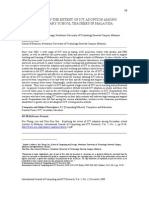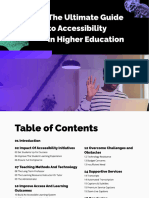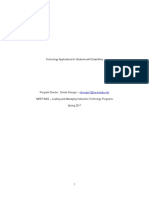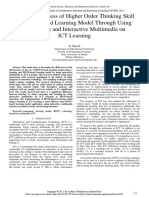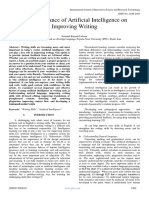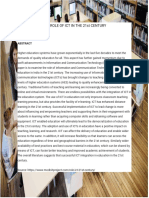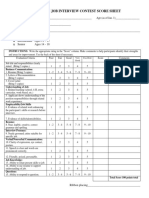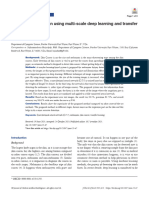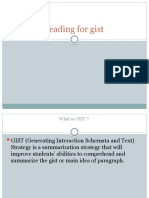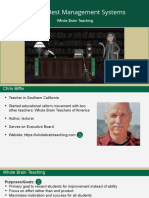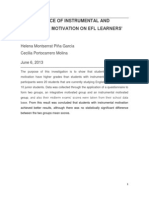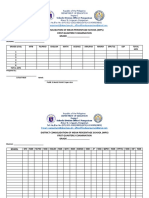0% found this document useful (0 votes)
191 views8 pagesBoosting Student Engagement with Tech
1. The document discusses increasing student engagement in schools through technology integration in teaching. It argues that today's students are accustomed to technology and that incorporating technology into lessons can increase student motivation and engagement.
2. The study sought to determine the impact of technology integration on student engagement levels, factors influencing classroom technology use, and what technologies teachers should incorporate. A teacher survey was used to gather information.
3. Effective technology integration can boost student engagement and foster purposeful learning if teachers understand how to use technologies to design engaging lessons. However, providing teachers only with technology training may not result in greater classroom integration, as ongoing support is also needed.
Uploaded by
Bryan Robert Maleniza BrosulaCopyright
© © All Rights Reserved
We take content rights seriously. If you suspect this is your content, claim it here.
Available Formats
Download as PDF, TXT or read online on Scribd
0% found this document useful (0 votes)
191 views8 pagesBoosting Student Engagement with Tech
1. The document discusses increasing student engagement in schools through technology integration in teaching. It argues that today's students are accustomed to technology and that incorporating technology into lessons can increase student motivation and engagement.
2. The study sought to determine the impact of technology integration on student engagement levels, factors influencing classroom technology use, and what technologies teachers should incorporate. A teacher survey was used to gather information.
3. Effective technology integration can boost student engagement and foster purposeful learning if teachers understand how to use technologies to design engaging lessons. However, providing teachers only with technology training may not result in greater classroom integration, as ongoing support is also needed.
Uploaded by
Bryan Robert Maleniza BrosulaCopyright
© © All Rights Reserved
We take content rights seriously. If you suspect this is your content, claim it here.
Available Formats
Download as PDF, TXT or read online on Scribd
/ 8



